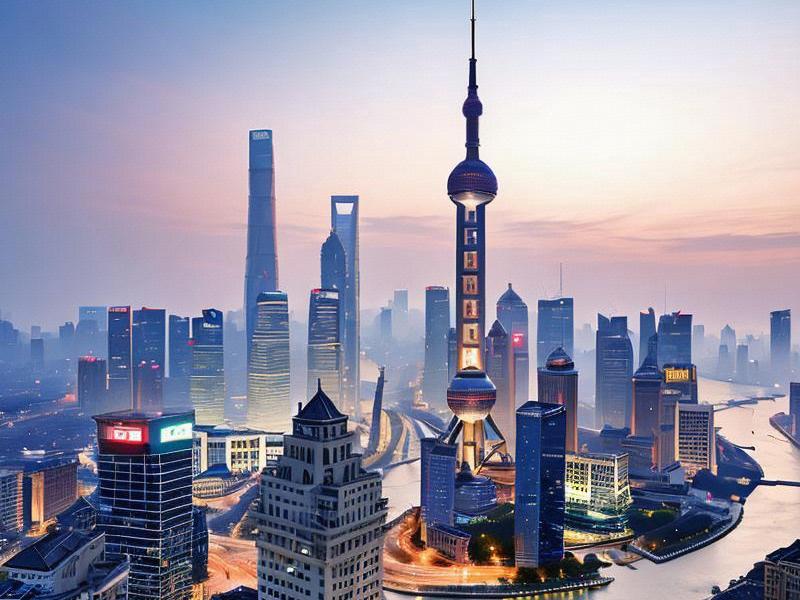This article delves into the vibrant metropolis of Shanghai and its surrounding areas, exploring their significance as a pivotal center in East Asia. It examines the city's economic prowess, cultural diversity, and strategic location, while also highlighting the unique characteristics of the nearby regions that contribute to the region's overall appeal.

Nestled on the eastern coast of China, Shanghai stands as a beacon of modernity and progress in East Asia. As the largest city in the country, it is not only a global financial hub but also a melting pot of cultures, history, and innovation. The surrounding areas, including the Yangtze River Delta region, further enhance Shanghai's status as a central player in the region.
Shanghai's rise to prominence can be traced back to its strategic location at the mouth of the Yangtze River, which connects the city to the vast inland regions of China. This geographical advantage has made Shanghai a key port city for centuries, facilitating trade and cultural exchange. Today, Shanghai is home to the world's busiest container port, handling millions of tons of cargo annually.
The city's economic might is undeniable. Shanghai is a global financial center, housing the Shanghai Stock Exchange and the Asian Infrastructure Investment Bank. It is also a hub for multinational corporations, with many international companies establishing their regional headquarters in the city. The Pudong district, in particular, has transformed into a symbol of China's economic reform and opening up, with its skyline dominated by iconic skyscrapers such as the Oriental Pearl Tower and the Shanghai Tower.
Beyond its economic achievements, Shanghai is renowned for its cultural diversity. The city is a blend of traditional Chinese culture and Western influences, reflecting its history as a former concession port. The Bund, a historic waterfront area, showcases this fusion with its mix of colonial-era buildings and modern skyscrapers. The French Concession, another popular district, offers a glimpse into the city's colonial past, with its charming streets lined with cafes, boutiques, and art galleries.
上海贵族宝贝sh1314 Shanghai's cultural scene is vibrant and dynamic. The city hosts numerous festivals and events throughout the year, including the Shanghai International Film Festival, the Shanghai Fashion Week, and the Shanghai Tourism Festival. These events attract visitors from around the world, contributing to the city's reputation as a cultural capital.
The surrounding areas of Shanghai further enrich the region's appeal. The Yangtze River Delta, often referred to as the "Rice Bowl of China," is one of the most economically developed regions in the country. Cities such as Suzhou, Hangzhou, and Nanjing are known for their historical significance, natural beauty, and economic contributions.
Suzhou, often called the "Venice of the East," is famous for its classical gardens, which are UNESCO World Heritage sites. These meticulously designed gardens reflect the harmony between nature and human creativity, offering visitors a glimpse into traditional Chinese aesthetics. Hangzhou, on the other hand, is renowned for its West Lake, a picturesque destination that has inspired poets and artists for centuries. The city is also a hub for technology and innovation, with companies like Alibaba and NetEase headquartered there.
Nanjing, the capital of Jiangsu province, is steeped in history and culture. It was the capital of several Chinese dynasties and is home to landmarks such as the Sun Yat-sen Mausoleum and the Ming Xiaoling Mausoleum. The city's rich history and modern development make it a fascinating place to explore.
爱上海419论坛
The integration of Shanghai and its surrounding areas creates a synergistic effect that benefits the entire region. The Yangtze River Delta region is a major driver of China's economic growth, contributing significantly to the country's GDP. The region's advanced infrastructure, skilled workforce, and innovative spirit make it a global leader in various industries, including finance, technology, manufacturing, and logistics.
The strategic location of Shanghai and its surrounding areas also plays a crucial role in regional and global connectivity. The city is a key node in the Belt and Road Initiative, a massive infrastructure project aimed at enhancing trade and cooperation between Asia, Europe, and Africa. Shanghai's ports and airports serve as vital gateways for international trade, connecting the region to the rest of the world.
Culturally, the region is a crossroads of East and West. The blend of traditional Chinese culture and Western influences creates a unique cultural landscape that attracts visitors and immigrants from around the globe. This cultural diversity not only enriches the lives of residents but also enhances the region's global appeal.
爱上海419 However, the rapid development of Shanghai and its surrounding areas also presents challenges. Urbanization, environmental concerns, and social inequalities are issues that need to be addressed to ensure sustainable growth. The Chinese government has implemented various policies to tackle these challenges, including promoting green development, improving public services, and fostering social harmony.
In conclusion, Shanghai and its surrounding areas represent a journey to the center of East Asia, where economic power, cultural diversity, and strategic location converge. The city's transformation into a global financial hub and cultural capital is a testament to its resilience and adaptability. The surrounding regions, with their historical significance and economic contributions, further enhance the region's appeal.
As Shanghai continues to evolve, it remains a symbol of China's rise as a global superpower. The integration of the city and its surrounding areas creates a dynamic and interconnected region that plays a pivotal role in shaping the future of East Asia. Whether through its economic achievements, cultural richness, or strategic importance, Shanghai and its surrounding areas stand as a beacon of progress and opportunity in the 21st century.
The journey to the center of East Asia is not just a physical one but also a cultural and economic exploration. Shanghai and its surrounding areas offer a unique perspective on the region's past, present, and future, making them a must-visit destination for anyone interested in understanding the complexities and opportunities of East Asia.